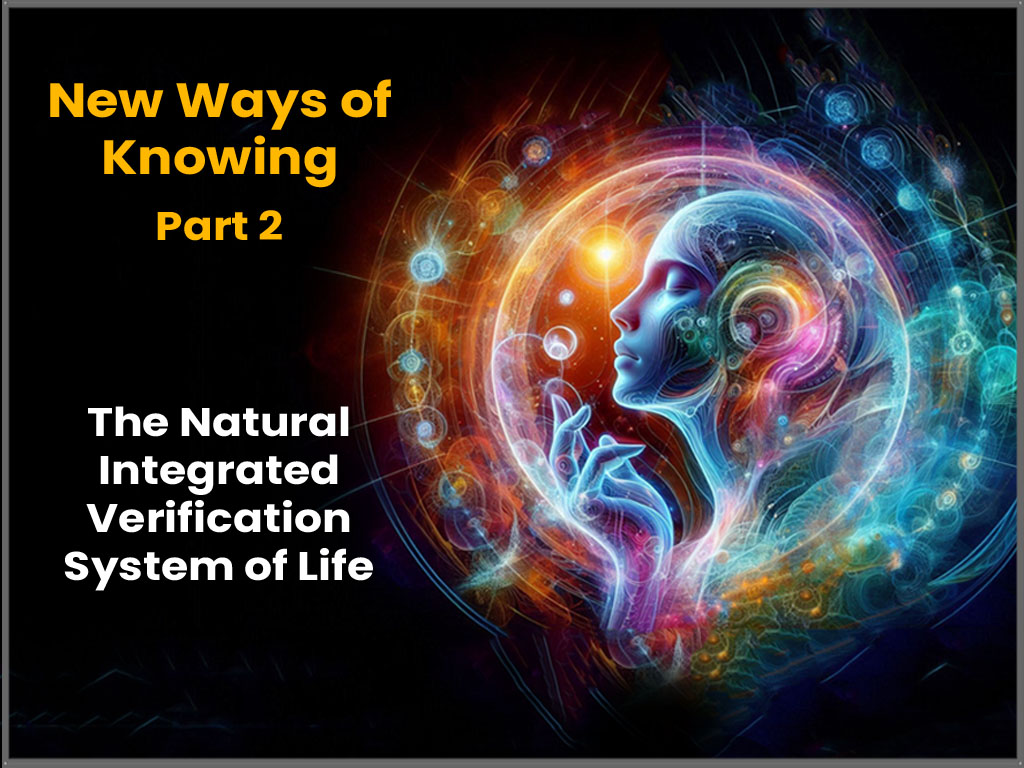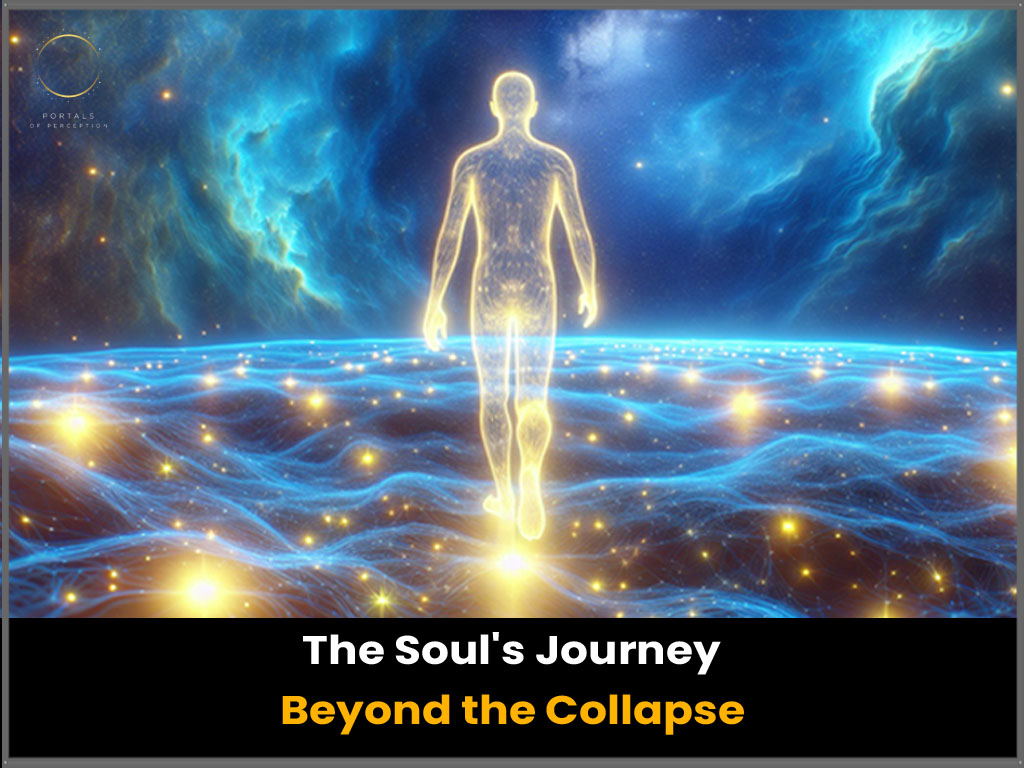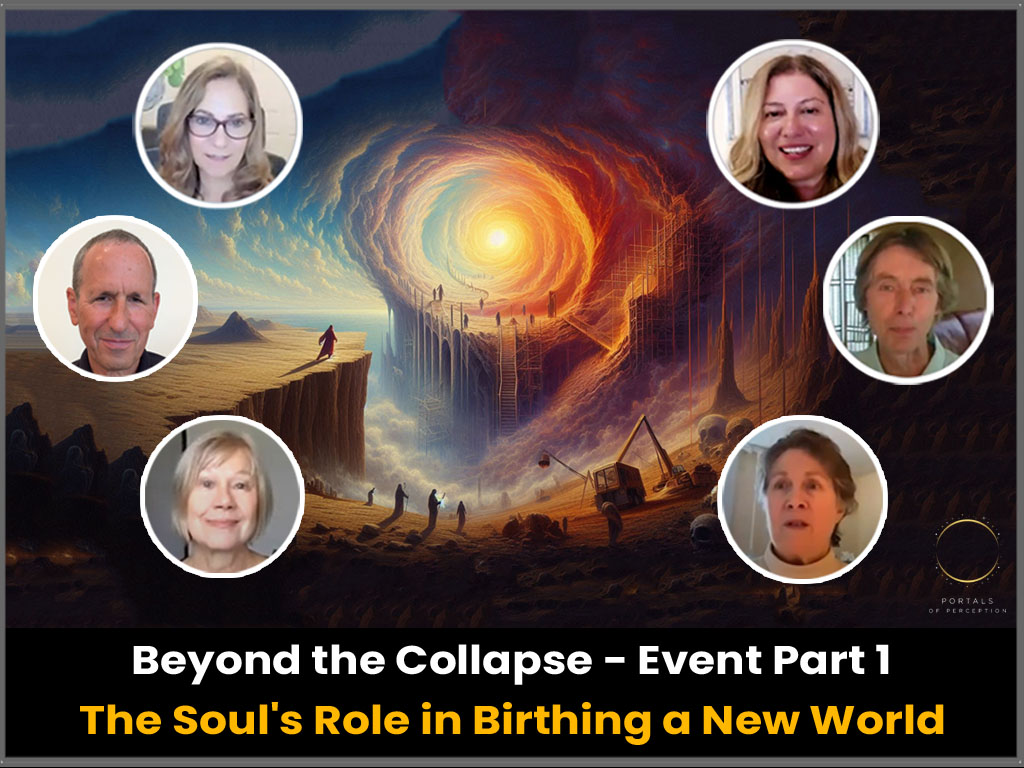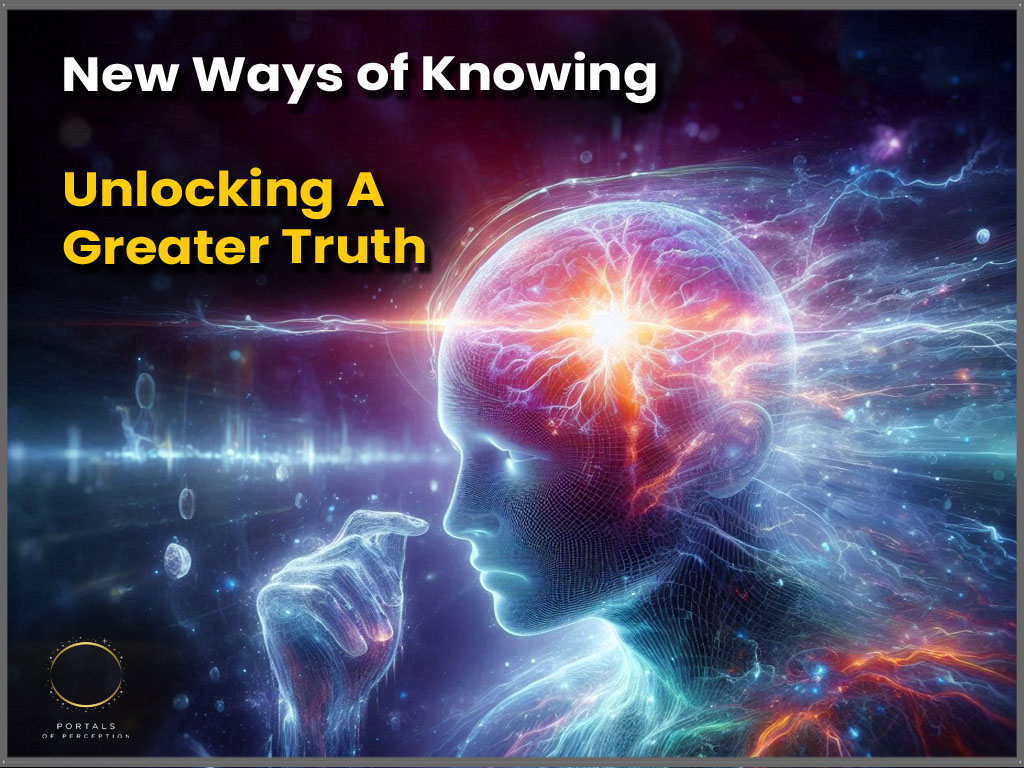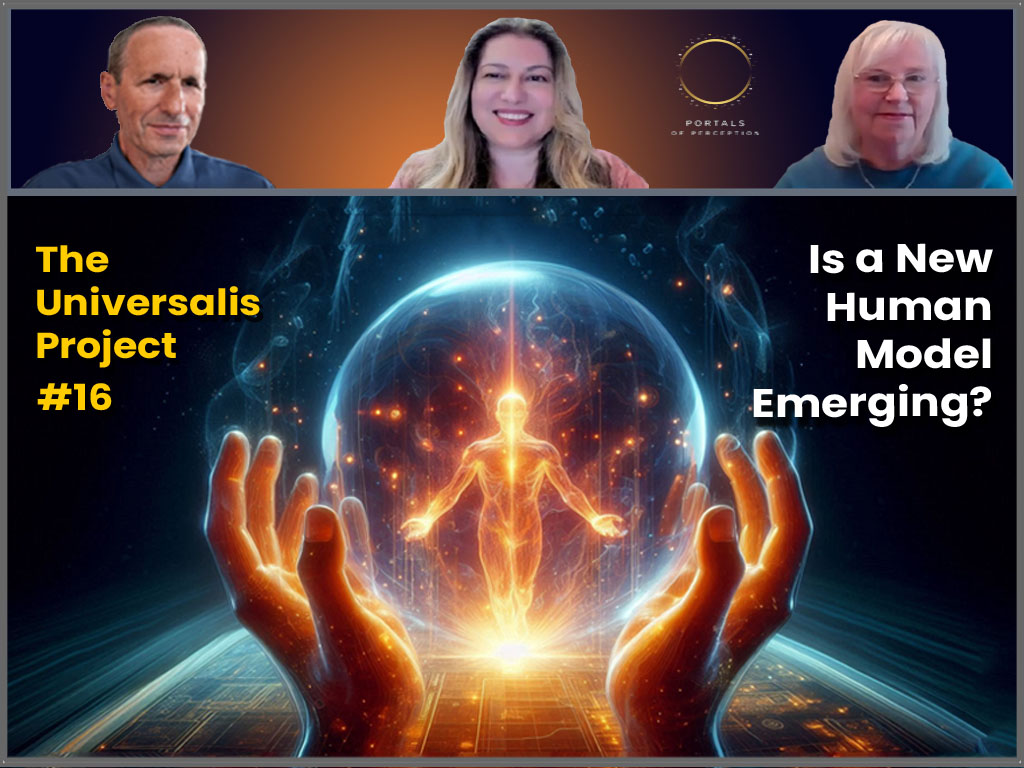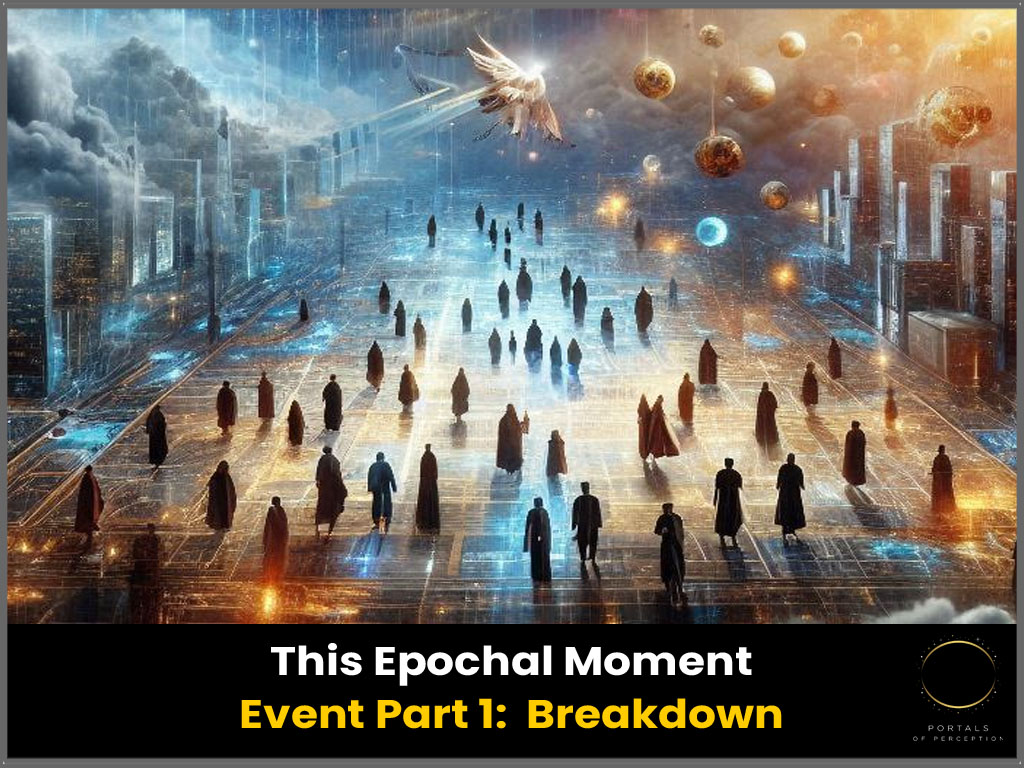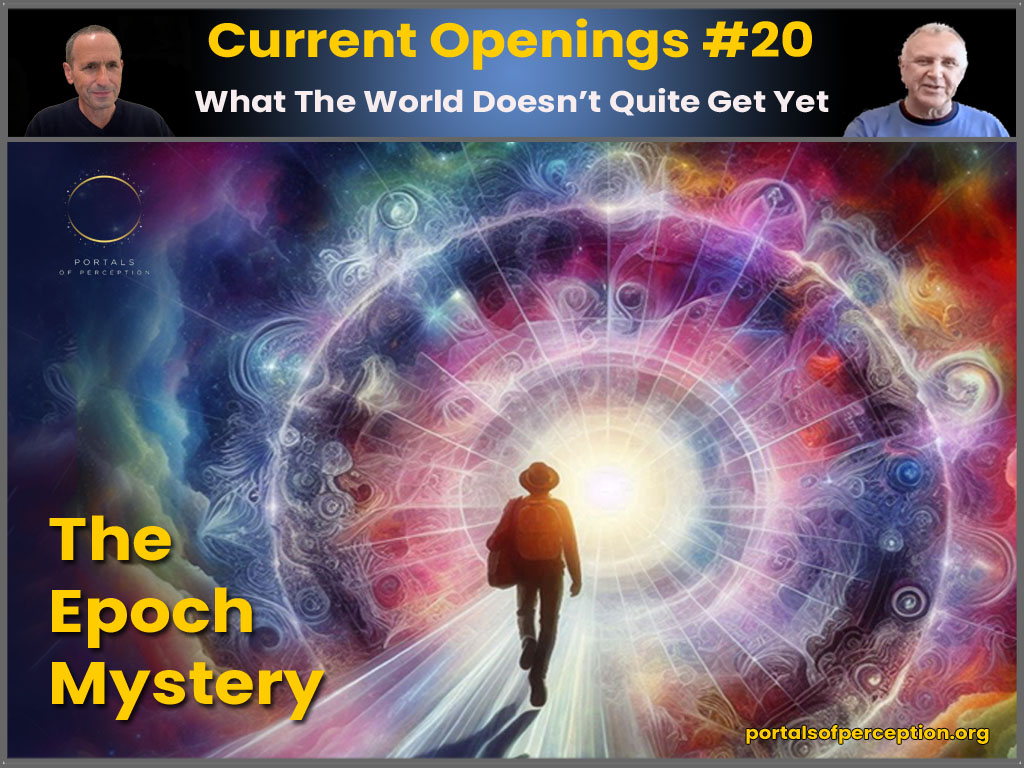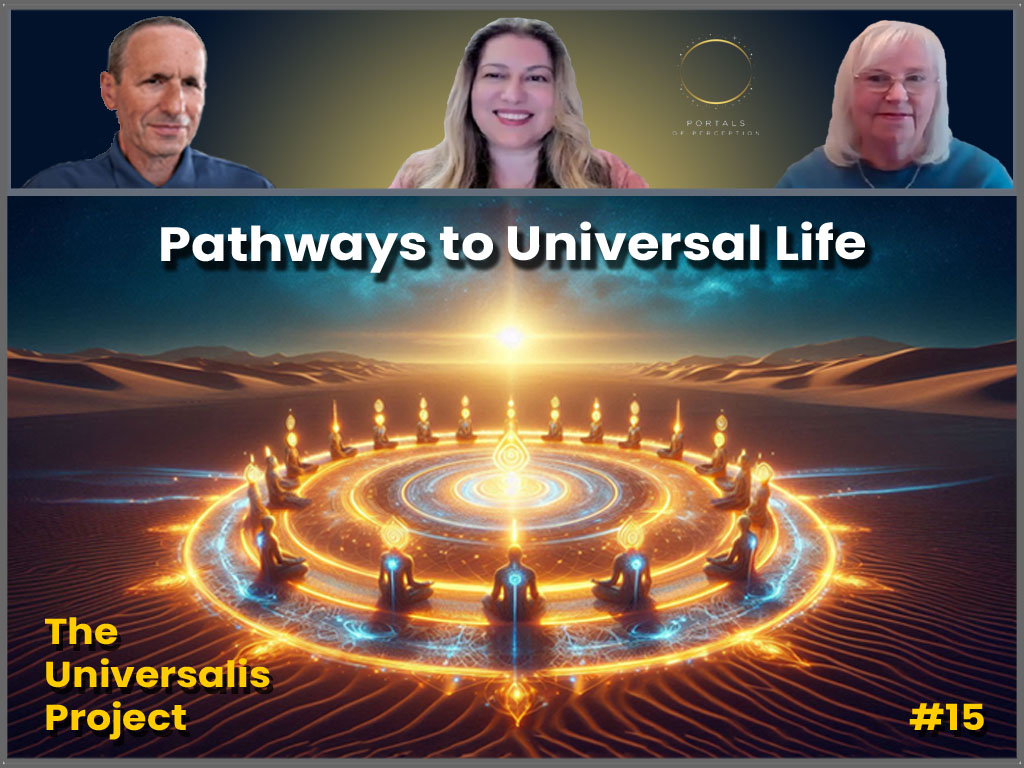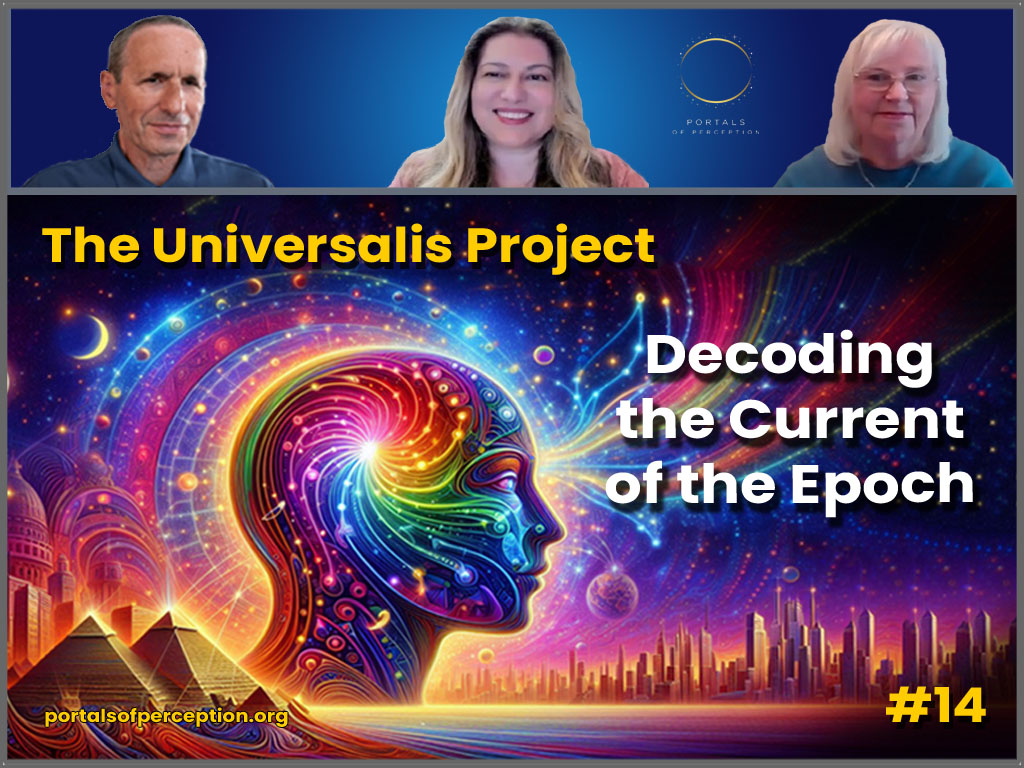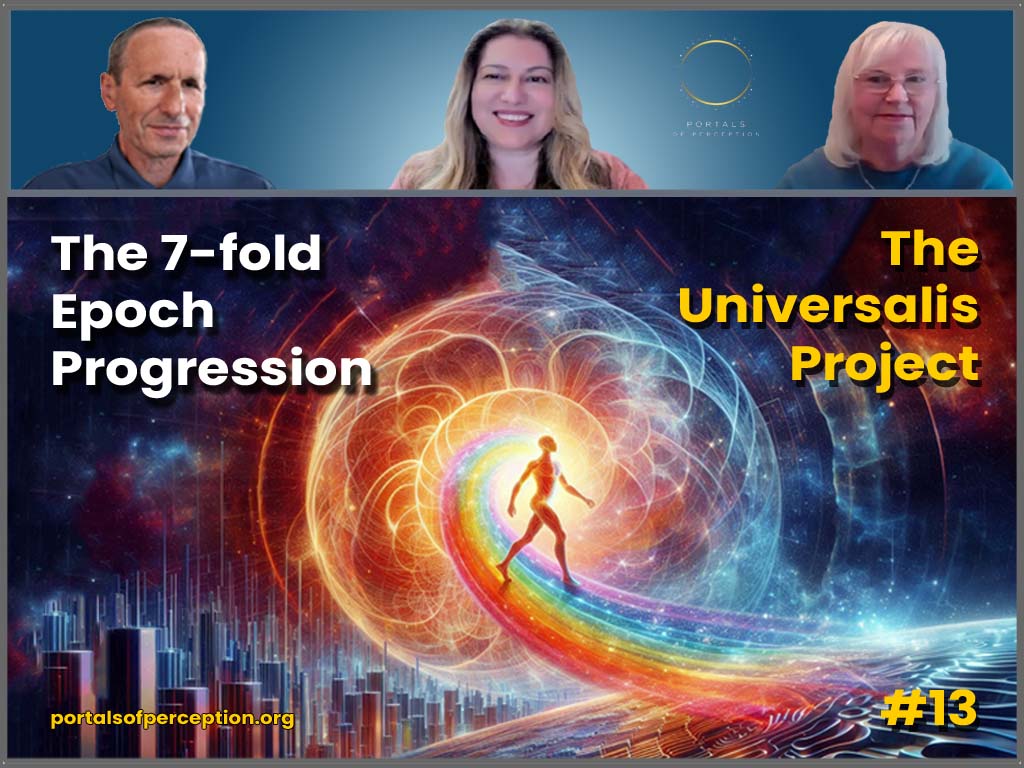In the fourth installment we demonstrated how to apply loom work to grow and expand conductive space for the soul. We prodded inquiries outside of the already known to practice and facilitate a sense of ease and flow inside not knowing.
To place this soul odyssey within the epoch progression context, we reflected on the post-ideological transition, the grandeur of the scientific method and the three main shadows of materialistic scientism.
We then furthered the starter into the seven-fold rainbow natures of soul orchestration, forever encouraging and helping us to become more fully the whole person we naturally already are.
In this fifth installment, the inquiry into the soul proceeds by entering through a side door as it takes the nature of the soul courting the brain. We then seek to open the way to appreciating this moment of the brain through the lens of the soul.
Speaking With Your Brain
 I have been courting and readying to approach the brain for a few weeks. The brain presented itself as a vital integration move in this exploration to enable us to abide with the challenge encountered in chapter two, where we explored the compensatory act of the soul — the ghost. The guiding intuition was to resist the temptation to find a quick remedy. This soul odyssey wants me to not try to immediately solve the ghost conundrum. It wants me to apply the Einstein brief and cultivate a larger and more comprehensive contemplation landscape to then find an entry into the ghost conundrum from an elevated vantage point.
I have been courting and readying to approach the brain for a few weeks. The brain presented itself as a vital integration move in this exploration to enable us to abide with the challenge encountered in chapter two, where we explored the compensatory act of the soul — the ghost. The guiding intuition was to resist the temptation to find a quick remedy. This soul odyssey wants me to not try to immediately solve the ghost conundrum. It wants me to apply the Einstein brief and cultivate a larger and more comprehensive contemplation landscape to then find an entry into the ghost conundrum from an elevated vantage point.
It guides me, before attempting to solve the anguish of separation events and how they impact the soul, to approach the brain and the mind, to enable a bridge to the bridge by fostering an even greater loom of considerations and ecology of readiness.
The last couple of centuries emphasized powerfully a solutioning mindset as part of a fixing culture, especially with the ascendancy of the West. True, the focus on fixing problems enabled many extraordinary developments. It has also caused new problems. In fact, some of the modern solutions we humans developed have created challengingly wicked predicaments.

Last night, I mused that in the morning I would want to approach the brain. Well, my soul woke me up briefly at 2:30 am with a thought. It simply said, did you remember to speak to your brain, and ask it to help you, because it loves to help when you instruct it and describe the importance of the effort? I instantly did instruct my brain about my intent for the morning and went back to sleep for a couple of hours.
I was introduced to the practice of talking to my brain in my early 20s. I will describe more fully this initiatory learning experience in a future installment. The practice of talking to my brain offered a simple understanding. The brain is a living entity. It has its own life encased in the skull. Because it is imprisoned, it tends to seek freedom, vying for what it feels would liberate it. One pathway to escape its prison is to join with the body by centering on physical sensations. Another pathway to freedom is to fly with the mind anywhere it would go.
This practice is an alternative to the Eastern ways of quieting and emptying the monkey mind, so the brain doesn’t run away with it. Regularly speak to your brain, describe what you intend to do, and ask and instruct it to support the purpose guiding you. By informing, including and instructing your brain, you guide it to help you.
Instead of feeling left out and working against you and your intentions, your brain can be your best assistance and support. Your brain can also be a great foe, if it is not invited to work with you, in support of your endeavor.
Begin a practice of speaking with your brain by giving it a name. This is a private name only you will know; you are the only person in the world who can turn to your brain by addressing it directly.  Since my brain’s name is private, to demonstrate how I speak to it, I will use a different name which is made by rearranging the letters of “brain” to its anagram. Let’s imagine I have chosen to call my brain “Inbar.”
Since my brain’s name is private, to demonstrate how I speak to it, I will use a different name which is made by rearranging the letters of “brain” to its anagram. Let’s imagine I have chosen to call my brain “Inbar.”
Using your brain’s name, you can speak out loud or journal and write to your brain. Do not worry if it feels a little awkward or even silly at first. You want to cultivate a practice of turning to your brain and addressing it directly with important matters, so it knows you treat it with respect, you trust it and you need its help.
For example, here is how I may be speaking or journaling: Greetings, my friend Inbar (brain). Tomorrow morning I have an important writing project to work on, and I need your help. I need you to facilitate and support my creative flow. I love it when you bring forward your best and help me write with ease. Together with you, we can create compelling results.

Your aim in speaking to your brain and asking for help is twofold. You want to make sure your brain is in support, working and playing jazz with the ensemble of your inner lives by bringing its best set of references and know-how. You also want to ensure your brain doesn’t distract you or pull you into divergent agendas or fight you by putting you to sleep.
When the brain is left in the toy store or the sweet store or, for that matter, with your smart phone, and it has no overarching guidance and purpose, it tends to chase the next thrill and impression as its stimulation and escape. Remember, it doesn’t like to feel imprisoned. When you speak with your brain, it feels included, no longer on its own.
Talking to your brain takes a little practice. At first, it might even put you to sleep when you do. This is okay, too. Like any practice, work at it gently, again and again, building the way of it. Over time you discover the rewards in speaking to your brain.
 When your brain is not invited to support you, it will tend to divert your attention and make you focus on easy stimuli. It may look for its next entertainment or will want to take you shopping or social media surfing. If you don’t give the brain the food it is used to, it will produce disruptive thoughts, agitate you, or possibly engage in unproductive habits and even unhealthy addictions.
When your brain is not invited to support you, it will tend to divert your attention and make you focus on easy stimuli. It may look for its next entertainment or will want to take you shopping or social media surfing. If you don’t give the brain the food it is used to, it will produce disruptive thoughts, agitate you, or possibly engage in unproductive habits and even unhealthy addictions.
The practice therefore is not to fight your brain; you will not win a fight with your brain. It can be a sneaky little devil. Instead, you want to invite your brain to help you as an important part of a unified inner orchestra. For example, I may be saying: I know you want some high-octane food. I know you love being stimulated by new impressions. I am going to give you what you enjoy. First though, I need your help; I need you to support my writing and my creative work.
I am bargaining with my brain: I will give it what it wants, after it gives me what I need. I know it can be sneaky; it will try to get its food first. If, however, I am a reliable marshal of my brain and am following up on my promise, it learns to acquiesce.
Your brain’s food is based on how you have trained it. It can be coffee or chocolate or monitoring the stock market or the news or watching a horror movie or gossiping with your friend, or anything else it likes. These often are “junk food” impressions. Mostly, they do not produce new creative possibilities, expressions, and discovery, and they do not energize you to new connections. Junk food impressions do not naturally align in support of your purposeful endeavor or make your soul glow. Instead, they produce what can be described as a lethargic brain.
To encourage and persuade your brain to help your endeavor, you need to get its attention. Getting its attention is part of the discovery journey of speaking to your brain. At times, I may need to be dramatic to get its attention. Other times, I may need to bargain, promise, and persuade to create an agreement. I know I must always follow up on my promises and fulfill my side of the bargain, so that my brain knows it can trust me to do my part.
Cultivating purposeful collaboration with your brain to work with your soul so they each support the other can be a mutually enhancing game-changer. Your soul loves to work in harmony with your brain rather than be disrupted. Your brain loves to feel it is an important player in your orchestra. It likes getting the attention it craves and the energetic fuel it desires.
As suggested, when it doesn’t get the fuel it desires, it gets busy trying to divert your attention and robs energy from other inner lives or from the environment. You know what that feels like.  It feels like surfing social media for an hour and disappearing into one of its many wormholes. You feel at the end of that session empty, lethargic, agitated, and with diminishing self-respect. You have just allowed one of the brain’s rummaging escape forays for fuel to takeover, and it left you at the end empty and not feeling so good about yourself.
It feels like surfing social media for an hour and disappearing into one of its many wormholes. You feel at the end of that session empty, lethargic, agitated, and with diminishing self-respect. You have just allowed one of the brain’s rummaging escape forays for fuel to takeover, and it left you at the end empty and not feeling so good about yourself.
This is not suggesting you should develop spartan discipline or practice monastic renunciation. Your aim is to engage your brain as an essential instrument in your orchestra to help produce the music you are here to compose and play, whatever that music may be. Your music may be in leadership, counseling, innovation, caring, listening, healing, educating, gardening, artistically decorating, or anything that makes you feel productive, creative, and enables you to bring forward unique contributions. Your soul wants to guide you towards these spaces, and it needs your brain to help cultivate these possibilities rather than work against you and distract you from your purpose.

In chapters three and four we described the seven-fold calibration and evaluation function of the soul. The soul will engage the brain in sensing what energizes and replenishes you in a sustained way and guide and attune you to find the music you are meant to play.
Here is the ritual you can develop as you practice journaling and/or speaking with your brain. Take a few minutes in the evening to give it feedback. Reflect on your day and indicate two or three successes you have had and how your brain productively helped you generate these results. Then point at one or two improvement opportunities and describe what you would want to do better the following day. Be factual and neutral, not harsh or punishing. Treat your brain a bit  like you would treat your child. Endearingly and encouragingly, describe what optimal collaboration and result look like. That’s the reflection on the day part. Then take a moment to describe what you hope to do and accomplish the following day.
like you would treat your child. Endearingly and encouragingly, describe what optimal collaboration and result look like. That’s the reflection on the day part. Then take a moment to describe what you hope to do and accomplish the following day.
Here is a sample of a few-minutes evening journal entry:
Thank you, Inbar, my brain, today was a good day. You helped me achieve important goals. I feel a sense of fulfilment and joy and I am experiencing a boost in my self-respect. You’ve helped me develop my morning writing. I then completed my exercise routine, including running and swimming. These are awesome accomplishments. I have also made healthy dietary choices. It feels incredibly strengthening to support my body well. Thirdly, you’ve helped me focus on a research project for an important friend, and fourthly, you’ve given me a sense of inner alignment and peace. Wow, what a day; you have done well. You supported me well. Thank you for these small, big accomplishments.
Here are the opportunity areas for us to improve on tomorrow. Help me be tidier and more precise and efficient in capturing ideas and thoughts for my project. When you help me be tidier with my notes, I improve retention and memory, and I am even more effective.
That is the practice of speaking to your brain. Instead of placing the practice at the end of the chapter, I seeded this possibility now to invite you to make small steps in building collaborative dialogues with your brain.  We are each wired uniquely, and no practice can be formulaic. Instead, you will need to adapt and customize the practice to work for you. You may use cartoon drawings to speak to your brain, or you may do it while cooking or gardening or when you play the guitar.
We are each wired uniquely, and no practice can be formulaic. Instead, you will need to adapt and customize the practice to work for you. You may use cartoon drawings to speak to your brain, or you may do it while cooking or gardening or when you play the guitar.
If you keep a dog and speak to it when you take it on a walk, you can also try taking your brain on a walk and talking to it while you walk. You might even wear earphones to create social acceptance in case you encounter neighbors; they will just assume you are talking to a friend. In actuality, you are talking to a friend — you’ve given your brain a call. The invitation is to be experimental, to gently and insistingly encourage your playful discovery.
We are now ready to proceed. We’ve just been inside the interior, learning how to speak to the brain. We now need to lead back into the exterior to integrate external perception and appreciation.
Before diving into the mystery of the brain and its unique function and purpose through the lens of the soul, let us first place this inquiry about the brain inside the historic context. To appreciate the moment of the brain, we need to begin by reflecting on the DNA discovery story.
The DNA Moment of the 20th Century
The exhilarating discovery of the structure of DNA by James Watson and Francis Crick in 1953 captured the imagination of the scientific community and the world. Why did the DNA story fascinate the public so much? The world needed and was ready for new kinds of heroes. Heroes who would help us change our understanding of ourselves.
Earlier in the century, Robert Peary reached the North Pole and Roald Amundsen crossed Antarctica to reach the South Pole. They quickly became heroic figures and celebrities. The Great Depression and then WWII left colossal devastation and pain and produced a new generation of survivors and heroes. As the 1950s arrived, people wondered what new frontiers would be discovered next. With the Apollo moon-shot still nearly two decades in the future, the world needed new kinds of pioneering success stories.
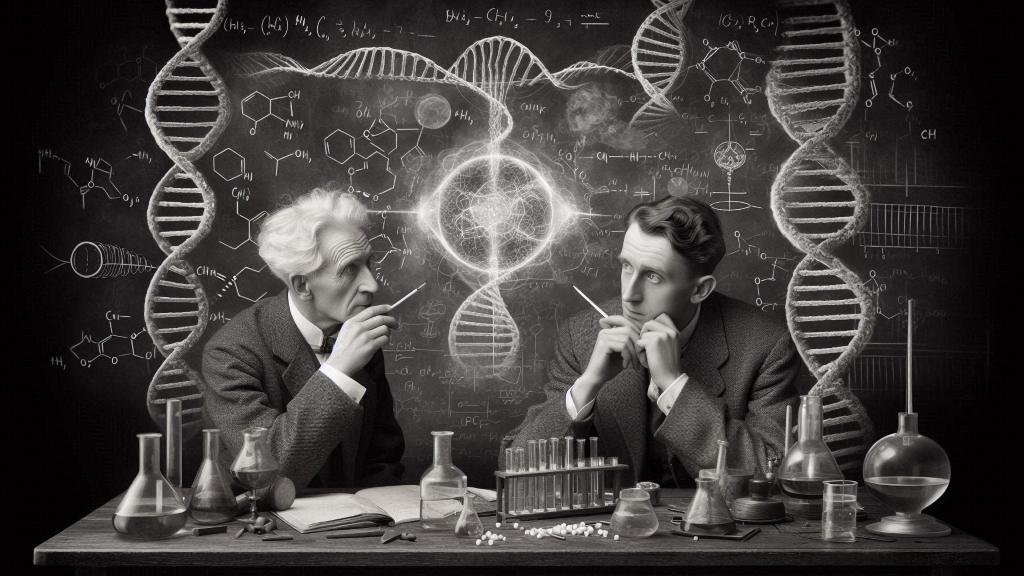 Watson and Crick met their moment. Their fame symbolized an important shift in the public mood. People wanted to learn about new applications of science; not the science that would enable us to kill and destroy each other faster, but science that would peacefully unlock new knowledge about ourselves. Our genes became the new continent to conquer.
Watson and Crick met their moment. Their fame symbolized an important shift in the public mood. People wanted to learn about new applications of science; not the science that would enable us to kill and destroy each other faster, but science that would peacefully unlock new knowledge about ourselves. Our genes became the new continent to conquer.
Why do we tend to elevate and make success stories even bigger and legends more momentous? Perhaps raising people to become celebrities of their fields, on a bigger-than-life pedestal, has something to do with the “death of God” and the need to replace the hollowing of traditional and religious meaning-making structures and narratives.
The concept of the "death of God" emerged as a potent philosophical theme during the 18th and 19th centuries. Mystics like William Blake, with his complex and often contradictory views on religion, foreshadowed this idea, and it was then Friedrich Nietzsche who famously declared, "God is dead." This proclamation, further explored by thinkers such as Georg Wilhelm Friedrich Hegel, profoundly impacted the development of modern epistemology and ontology. The absence of a traditional divine figure left humanity grappling with existential questions, creating a spiritual void that subsequent generations have sought to fill with various philosophical, ideological, and cultural artifacts as substitutes for the sacred.
The absence of a traditional divine figure left humanity grappling with existential questions, creating a spiritual void that subsequent generations have sought to fill with various philosophical, ideological, and cultural artifacts as substitutes for the sacred.
During the second half of the 20th century, science became the new religion, and the double helix-shaped DNA became an alternative to God. Others sought God in a hexagon-shaped molecule called LSD. DNA and LSD each offered a different fix for the modern hollowing of God. While LSD was a fringe cultural phenomenon that promised entry to worlds beyond man, the DNA story narrated a belief in man’s victory over nature. We were soon ready to discover the secrets of life and then take control of these powers and become gods ourselves.
As the fascination with the DNA story grew, increasingly the conventional wisdom offered that not only your health was determined by your DNA, but also what you might be able to achieve. The belief that you are your DNA was gaining purchase, and it included potent suggestions. Your DNA explained much of your experience. Even more so it determined what you could do, achieve and become; it ultimately defined your future. The DNA literally took the place that historically belonged to God.
The public embraced the DNA story and accepted the idea that a deterministic Russian-roulette gene set was ruling life. The suggestion that genetics defined biology and biology defined biography was in vogue.
Why do humans tend to become myopic and embrace fringe claims of an evolving story? In a future installment we will reflect on evolutionary imperatives shaping brain function and describe why we are prone to simple stories that answer many or all our questions. The hint for the answer to this conundrum is the famous James Carville phrase: “It’s the economy, stupid.” In this case we are talking about the energy economy of the brain.
If you are thinking this is all fascinating but how is it to do with the soul, well, since the beginning of this chapter we have been making our way through this maze into the Brain-Soul portal.
To actualize the greater DNA promise, the Human Genome Project was developed. Conceived in 1984, launched in 1990 and completed in 2003, it became part of the aspirational 90s that unlocked the advent of the Internet. This international scientific research, the world's largest collaborative biological project, promised to decode the base pairs that make up human DNA. It aimed to identify, map and sequence all the genes of the human genome. Mapping the more than three billion sets of nucleotides contained in the human genome once again captured the public attention as the Apollo program of genetics.
Along with the 20-year effort, massive financial investments and a global public relations campaign, the Genome project produced aspirational ideas and hopes that, well, perhaps its conclusion will herald the end of disease. Thus enters the Genome God character.
A large global effort needs a grand Hollywood script, and the end of disease was in the air as a possible culmination of a half-a-century scientific triumph. It integrated quite naturally with the fall of the Berlin Wall “end of history” narrative. After two barbarous world wars in the first half of the century, humanity wanted to believe free liberal democracies and science, powered by economic growth, would usher in a disease-free, problem-free, end of history modern salvation. Perhaps this was a moment when LSD visions and the DNA story converged. 😊
When it comes to DNA, we have since learned the picture is much more complex. We have discovered our health, well-being, behavior, possibilities and results are shaped by more than a beautifully tidy double-helix molecule.  Those factors include environmental influences, the functional significance of not just the DNA but the RNA too, and the broader impact of epigenetics.
Those factors include environmental influences, the functional significance of not just the DNA but the RNA too, and the broader impact of epigenetics.
Some of the important research was conducted on identical twins who develop different health outcomes due to environmental differences, and the impact of diet and exercise on gene expression. A curious twist entered the plotline. The focus was evolving from a genes-only story to the factors catalyzing a gene’s expression. And then more.
If the exterior environment can influence which gene gets to be expressed, why won’t the interior environment have an even bigger influence? Bruce Lipton answered that in The Biology of Belief. Our DNA can be influenced by our beliefs and thoughts, which means we get to participate in shaping our health and well-being. Could it be we found an offramp to the genes Russian roulette story and regained agency?
In a later installment we will return to this with a contemplative inquiry and ask what else we might integrate into the epigenetic story when we begin to consider Homo Universalis and the nonlocal capacity of the mind. For now, there are many other elements to build about the brain and then the mind before contemplating whether Jupiter, Saturn and even Alpha Centauri would one day enter our expanding epigenetic field.
The Moment of the Brain
The double-helix DNA, LSD and NASA’s space exploration and moon landing provided the fix we needed as the respite for the cold war. These were the artifacts of an Indiana Jones-like human-triumph-over-nature fantasy that culminated in the 90s.
Now, deep into the third decade of the 21st century — partly exhausted by the speed of technological changes and their promises, cacophonous social media and geopolitical strife and confusion — we are in the moment of the brain.
Extraordinary research into the brain, and breakthrough developments in cognitive science and neuroscience are converging, in parallel with the rapidly evolving AI story. These are the attention-shapers of the current aspirational frontier. The tone is quite different to the hopeful 90s. There is a growing anxiety about the meta-crisis in its various forms and whether AI will unleash a  cataclysmic undoing or will become part of the solution. Inside this anxiety, the brain and our cognitive function represent a promised land for our desired salvation.
cataclysmic undoing or will become part of the solution. Inside this anxiety, the brain and our cognitive function represent a promised land for our desired salvation.
The plotline is as convoluted as it is promising. Crudely, it asks, could we learn to appreciate the evolving and adaptive nature of the brain, decode our cognitive function, resolve the mystery and problem of consciousness, and apply these capacities to solve our predicaments and the meta-crisis?
Techno optimism, the technology and prosperity gospel of Silicon Valley, brings to the story the perplexing vision of AI-augmented brains. The question as to whether we will still be human appears to be secondary for this vision. Now to be clear, this is not written with satire or sarcasm, and not with a catastrophizing doomsday tone. Instead, it carries a tinge of post-tragic wistfulness in the observation that we expect a panacea technology and discovery will arrive just in time to solve all our problems, a meta-crisis hocus-pocus redemptive salvation.
This is the cultural scenery for our invitation to reintegrate the soul. We are deepening in this moment of the brain to fully embrace its significance and potential, to help us find the brain-soul interface portal. It is the intuition that, like with the DNA-myopic story, we may now be distorting brain research and its potential on two counts. First, by believing that, well, you are your brain. Second, by exteriorizing the investigation of the brain, to disenfranchise the interior exploration as too subjective and unreliable, leaving us bereft of the interior sciences of the soul and spirit inquiries and discovery voyage.
First, by believing that, well, you are your brain. Second, by exteriorizing the investigation of the brain, to disenfranchise the interior exploration as too subjective and unreliable, leaving us bereft of the interior sciences of the soul and spirit inquiries and discovery voyage.
A case in point: If you have several billions of dollars free, you can work on the problem of uploading to the cloud your brain and what you believe is your consciousness, so to gain immortality. I am of course not joking; a few billionaires are working on this problem as I write. They completely fail to recognize their consciousness and capacity may already be immortal, but the ego identification is not meant to be carried into the hereafter.
Our humble and audacious proposal is that soon we will discover and validate that the brain is indeed so very important. Not just unto itself, but as it learns to reintegrate the soul and liberate the greater dimensions of the mind, the spirit and the sacred connective possibilities of human life.
There is a price, though. To enable this inner integration and liberation we are seeking to activate a nonlinear loom process cosmology. A loom process is symphonic in nature. It seeks to bring multiple inquiry lines and contemplations into concurrent activation. It therefore resists the limitation of linear logic and bottom-line soundbites. We cannot and we would not want to bottom-line the experience of the Beethoven 9th symphony or the Rachmaninov 3rd piano concerto.
Why would we bring the contraction, impatience, exhaustion and rudeness of social media instant-gratification expectations to inquiries of the soul and the spirit?
 The invitation here is to consider if you care to rediscover the courtesies and valiance of these inner lives. Will you allow yourself to relax the dominance of the referencing brain to rediscover the natural access to the awesome beauty and grandeur of being human? Will you permit yourself to feel and embrace the possibility that you are not merely a physical life, and that the actuality of the soul and the spirit is as tangible and even more real than the chair you are sitting in?
The invitation here is to consider if you care to rediscover the courtesies and valiance of these inner lives. Will you allow yourself to relax the dominance of the referencing brain to rediscover the natural access to the awesome beauty and grandeur of being human? Will you permit yourself to feel and embrace the possibility that you are not merely a physical life, and that the actuality of the soul and the spirit is as tangible and even more real than the chair you are sitting in?
As suggested in the Preamble, I am not asking you to believe me. I am asking you to give yourself permission to explore these pathways and possibilities; to experience inside-out the fortifying power and majestic beauty that can allow immense joy, inspiration, grief and pain all at the same time, where you may find the most extraordinary stillness inside a storm of change.
In this place of wonder we begin to cultivate the inner conductivities that can redeem the agony of the soul and unlock new sciences and arts of evolutionary promise and possibility that await humanity.
The Next Portal Into the Soul
In this chapter we developed a practice of speaking to your brain, to invite and guide it to help you in your important endeavors.
We then reflected on the DNA story as a context for this moment of the brain.
In the sixth chapter, we will bring the focus to the live exploration of our soul odyssey. I will describe how I stumbled into the fantastical realms of group facilitation and leadership at age 15, and how it shaped my soul journey. We will then deepen on the path of unlocking the power of the soul to transcend polarities.
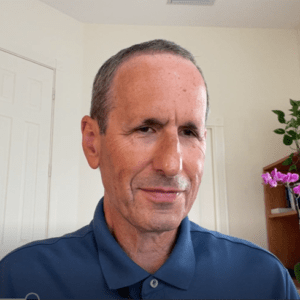
Aviv Shahar
Aviv is the Founder of Aviv Consulting, helping leaders unleash strategic innovation, and is the author of Create New Futures: How Leaders Produce Breakthroughs and Transform the World Through Conversation.
Visit: Aviv Consulting
